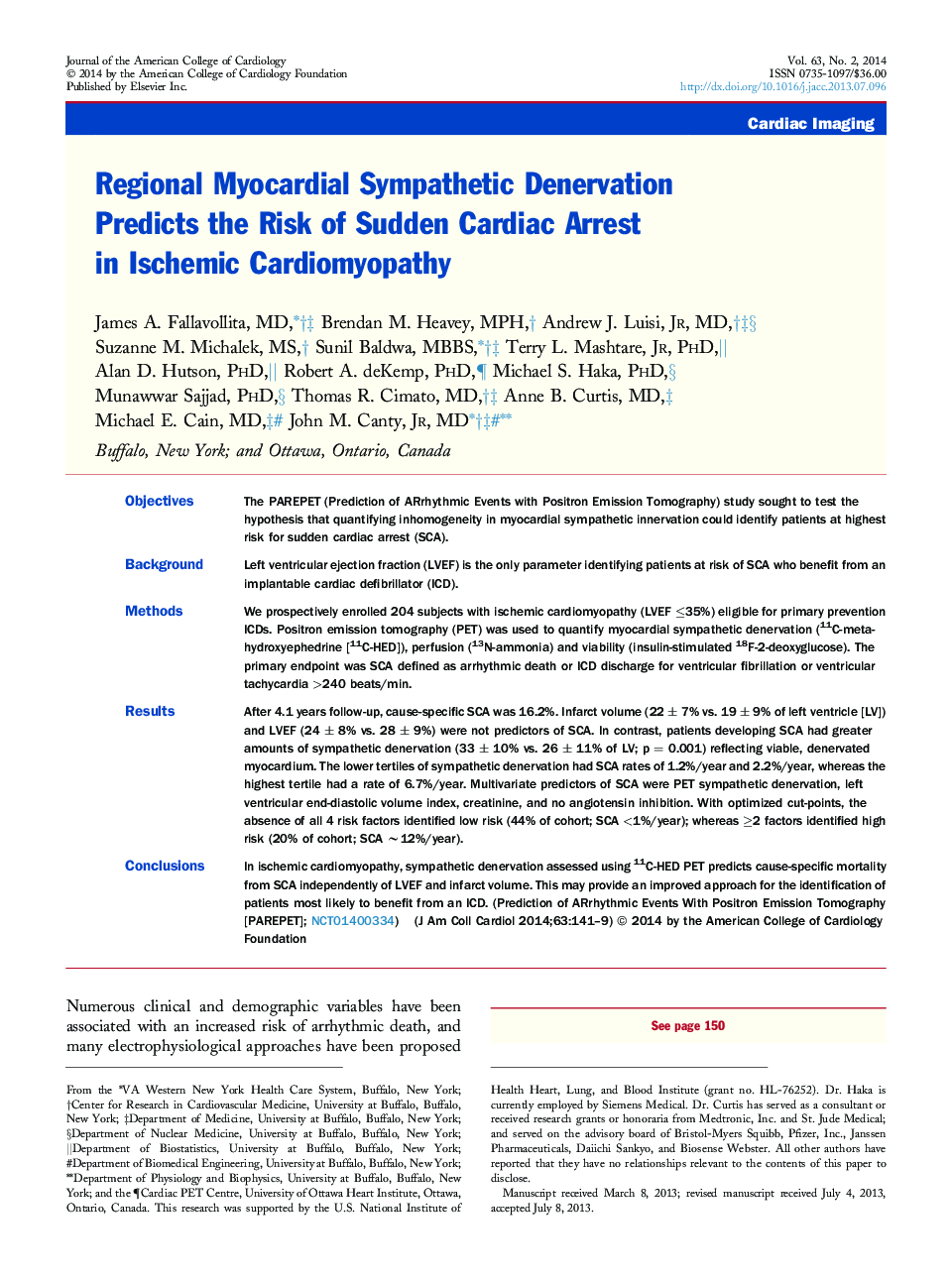| Article ID | Journal | Published Year | Pages | File Type |
|---|---|---|---|---|
| 2946276 | Journal of the American College of Cardiology | 2014 | 9 Pages |
ObjectivesThe PAREPET (Prediction of ARrhythmic Events with Positron Emission Tomography) study sought to test the hypothesis that quantifying inhomogeneity in myocardial sympathetic innervation could identify patients at highest risk for sudden cardiac arrest (SCA).BackgroundLeft ventricular ejection fraction (LVEF) is the only parameter identifying patients at risk of SCA who benefit from an implantable cardiac defibrillator (ICD).MethodsWe prospectively enrolled 204 subjects with ischemic cardiomyopathy (LVEF ≤35%) eligible for primary prevention ICDs. Positron emission tomography (PET) was used to quantify myocardial sympathetic denervation (11C-meta-hydroxyephedrine [11C-HED]), perfusion (13N-ammonia) and viability (insulin-stimulated 18F-2-deoxyglucose). The primary endpoint was SCA defined as arrhythmic death or ICD discharge for ventricular fibrillation or ventricular tachycardia >240 beats/min.ResultsAfter 4.1 years follow-up, cause-specific SCA was 16.2%. Infarct volume (22 ± 7% vs. 19 ± 9% of left ventricle [LV]) and LVEF (24 ± 8% vs. 28 ± 9%) were not predictors of SCA. In contrast, patients developing SCA had greater amounts of sympathetic denervation (33 ± 10% vs. 26 ± 11% of LV; p = 0.001) reflecting viable, denervated myocardium. The lower tertiles of sympathetic denervation had SCA rates of 1.2%/year and 2.2%/year, whereas the highest tertile had a rate of 6.7%/year. Multivariate predictors of SCA were PET sympathetic denervation, left ventricular end-diastolic volume index, creatinine, and no angiotensin inhibition. With optimized cut-points, the absence of all 4 risk factors identified low risk (44% of cohort; SCA <1%/year); whereas ≥2 factors identified high risk (20% of cohort; SCA ∼12%/year).ConclusionsIn ischemic cardiomyopathy, sympathetic denervation assessed using 11C-HED PET predicts cause-specific mortality from SCA independently of LVEF and infarct volume. This may provide an improved approach for the identification of patients most likely to benefit from an ICD. (Prediction of ARrhythmic Events With Positron Emission Tomography [PAREPET]; NCT01400334)
